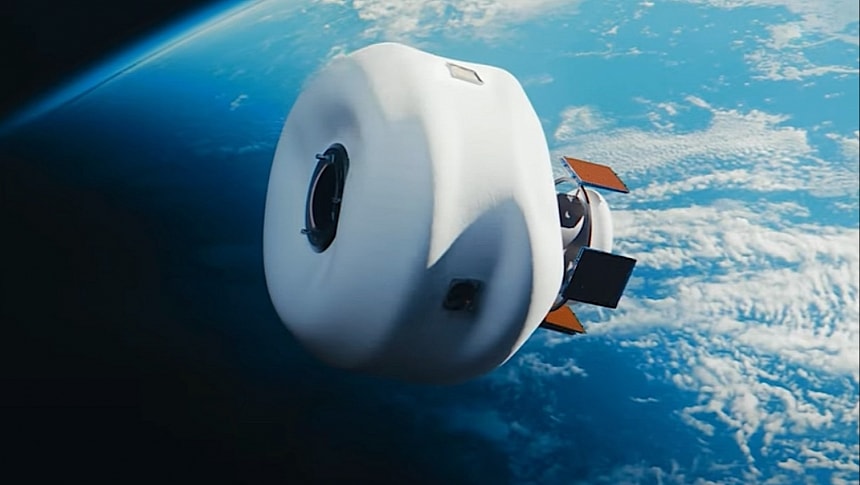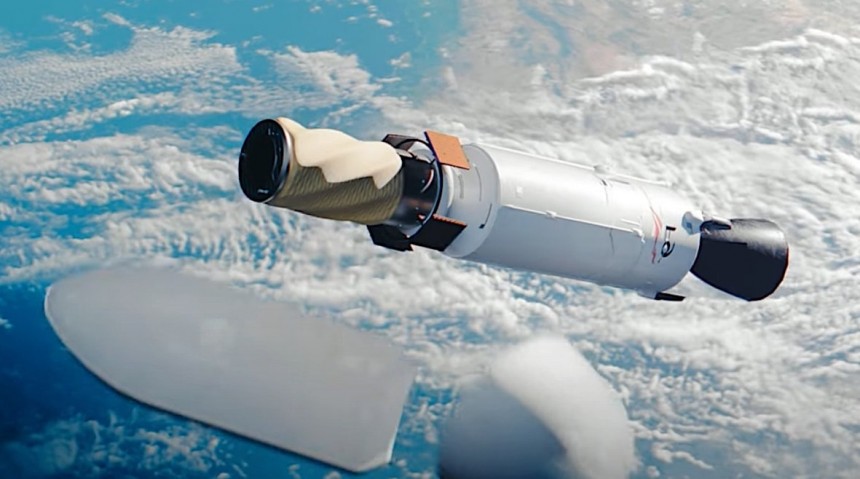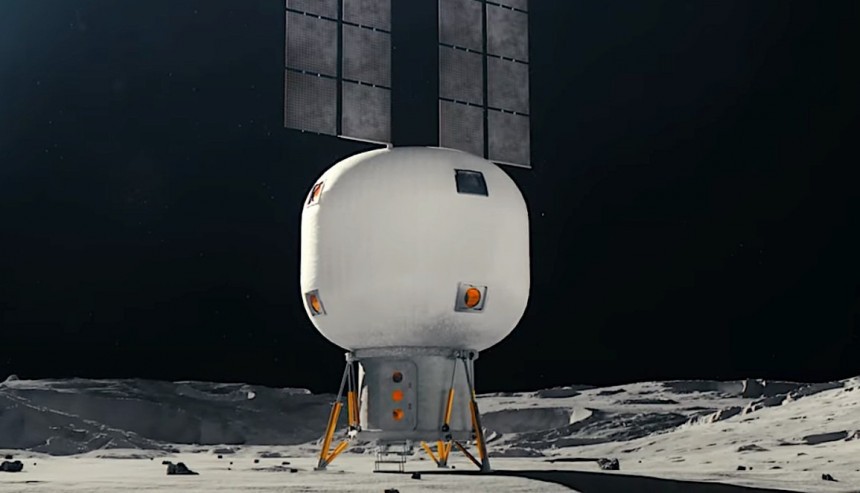Inflatable space habitats are a relatively new concept in space exploration. Although people started thinking about such things ever since the 1960s, when the original space race was at its peak, it wasn't until private space pioneers literally made space accessible for everyone with much-cheaper-than-before-launches that inflatable became the focus of space exploration.
Humanity's direct presence beyond the borders of our own planet is currently made possible by two space stations: the International Space Station (ISS) operated by the United States, Russia, and their partners, and the Chinese Tiangong.
Both of them have been assembled in orbit after the main components were launched from Earth in a ready-to-work state. The stations have metallic structures and modules because using metal was until now the only way we knew of to make habitats strong enough to support the vicious conditions in the big void.
However, that approach does come with a series of disadvantages, the biggest of them being the cost of each launch and the size the station can ultimately have.
Take the ISS, for instance. The oldest orbital laboratory in operation was fully assembled after 30 separate launches that unfolded over a period of ten years. Its cost, including development, assembly, and running costs over a decade amounts to a staggering $100 billion. And that while allowing just seven people to live up there at a time, in a space that has a volume of 935 cubic meters (33,023 cubic feet).
The Tiangong, on the other hand, will to be completed at the end of 11 missions, and it will cost about $8.2 billion. It will only be able to host three astronauts in a pressurized volume of 340 cubic meters (12,000 cubic feet).
In themselves, both space stations are more than enough to do what they were designed to do, but if we are to really expand into space and on other worlds, using pre-assembled structures made of metal delivered in multiple stages would be prohibitively expensive and inefficient.
And this is where inflatable habitats come in. Because they can be launched packed, entire space stations could be deployed in a single mission, as easily as inflating a balloon, and at a fraction of the cost of the existing ones.
Several companies are presently working on such technologies, including Lockheed Martin, Airbus, and a series of startups. Most of the designs these guys are developing pale in comparison with what a crew called Max Space has up its sleeves.
The company is a relative newcomer to the private space industry table, but it has quite a bit of experience behind it, thanks to its founders. One, Aaron Kemmer, was also behind another space startup called Made In Space, "the first in-space manufacturing company," and the other, Maxim de Jong, is the brain behind the Genesis I and II inflatable habitat pressure hulls sent in orbit more than a decade ago by Bigelow Aerospace. Both of them are still orbiting our planet as a sort of proof of concept such ideas have merit.
But Max Space is planning something much larger than the two Genesis or anything else the other companies working on inflatable habitats are targeting. Imagine, for instance, something that has a pressurized volume, once deployed, of over 10,000 cubic meters (353,000 cubic feet). More than enough to establish permanent human outposts not only in space, but on planetary surfaces as well.
The tech was announced by Max Space during the 39th Space Symposium which took place at the beginning of the month in Colorado Springs. Not many details about it were released, but we do know enough to paint a pretty decent picture of what to expect.
Max's idea relies on an expandable architecture that "decomposes” the pressure shell into uncoupled structural elements. Because of this the habitat can not only be launched with a single rocket (supplied either by SpaceX or Blue Origin), but it is also scalable.
How scalable? Well, imagine the volume of the entire ISS can be placed in orbit in a single mission, at a cost of just $1 billion. Cost goes up, naturally, for larger structures, but it never comes even near to how much money the space station ate.
The shell of the habitat is made of an undisclosed material that is ballistic grade and at the same time stronger than existing metallic structures. The stuff comes with a tensile strength of 28,800 pounds and a maximum burst limit of 69 pounds force per square inch.
Max claims the habitat has the the lowest mass of any other pressurized architecture, but does not go into the specifics of that.
We should see the first habitat made by the company in action in space as soon as 2026, when the first test flight of the tech is scheduled with the help of a SpaceX rocket. If that turns out ok, Max Space plans to produce an entire family of such things, ranging in size from 20 cubic meters to 1,000 cubic meters (706 to 35,000 cubic meters).
There are many potential uses for this kind of habitat, ranging from orbital stations to outposts on the surface of the Moon or even Mars. It remains to be seen, however, if Max Space will become the power to make the tech work or it will be yet another startup the world will soon forget about.
Both of them have been assembled in orbit after the main components were launched from Earth in a ready-to-work state. The stations have metallic structures and modules because using metal was until now the only way we knew of to make habitats strong enough to support the vicious conditions in the big void.
However, that approach does come with a series of disadvantages, the biggest of them being the cost of each launch and the size the station can ultimately have.
Take the ISS, for instance. The oldest orbital laboratory in operation was fully assembled after 30 separate launches that unfolded over a period of ten years. Its cost, including development, assembly, and running costs over a decade amounts to a staggering $100 billion. And that while allowing just seven people to live up there at a time, in a space that has a volume of 935 cubic meters (33,023 cubic feet).
The Tiangong, on the other hand, will to be completed at the end of 11 missions, and it will cost about $8.2 billion. It will only be able to host three astronauts in a pressurized volume of 340 cubic meters (12,000 cubic feet).
In themselves, both space stations are more than enough to do what they were designed to do, but if we are to really expand into space and on other worlds, using pre-assembled structures made of metal delivered in multiple stages would be prohibitively expensive and inefficient.
Several companies are presently working on such technologies, including Lockheed Martin, Airbus, and a series of startups. Most of the designs these guys are developing pale in comparison with what a crew called Max Space has up its sleeves.
The company is a relative newcomer to the private space industry table, but it has quite a bit of experience behind it, thanks to its founders. One, Aaron Kemmer, was also behind another space startup called Made In Space, "the first in-space manufacturing company," and the other, Maxim de Jong, is the brain behind the Genesis I and II inflatable habitat pressure hulls sent in orbit more than a decade ago by Bigelow Aerospace. Both of them are still orbiting our planet as a sort of proof of concept such ideas have merit.
But Max Space is planning something much larger than the two Genesis or anything else the other companies working on inflatable habitats are targeting. Imagine, for instance, something that has a pressurized volume, once deployed, of over 10,000 cubic meters (353,000 cubic feet). More than enough to establish permanent human outposts not only in space, but on planetary surfaces as well.
The tech was announced by Max Space during the 39th Space Symposium which took place at the beginning of the month in Colorado Springs. Not many details about it were released, but we do know enough to paint a pretty decent picture of what to expect.
Max's idea relies on an expandable architecture that "decomposes” the pressure shell into uncoupled structural elements. Because of this the habitat can not only be launched with a single rocket (supplied either by SpaceX or Blue Origin), but it is also scalable.
The shell of the habitat is made of an undisclosed material that is ballistic grade and at the same time stronger than existing metallic structures. The stuff comes with a tensile strength of 28,800 pounds and a maximum burst limit of 69 pounds force per square inch.
Max claims the habitat has the the lowest mass of any other pressurized architecture, but does not go into the specifics of that.
We should see the first habitat made by the company in action in space as soon as 2026, when the first test flight of the tech is scheduled with the help of a SpaceX rocket. If that turns out ok, Max Space plans to produce an entire family of such things, ranging in size from 20 cubic meters to 1,000 cubic meters (706 to 35,000 cubic meters).
There are many potential uses for this kind of habitat, ranging from orbital stations to outposts on the surface of the Moon or even Mars. It remains to be seen, however, if Max Space will become the power to make the tech work or it will be yet another startup the world will soon forget about.












